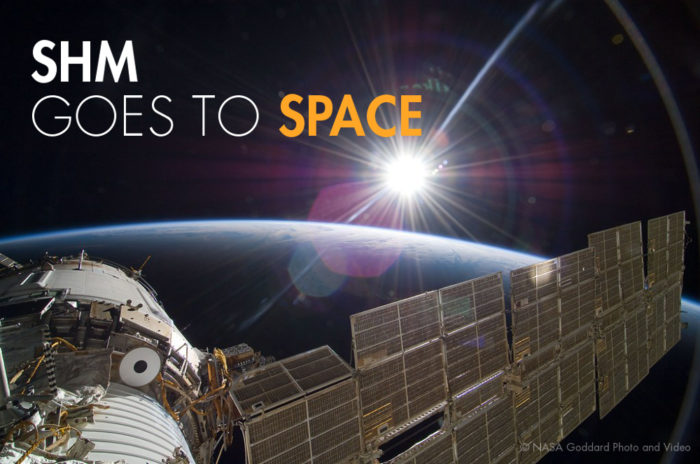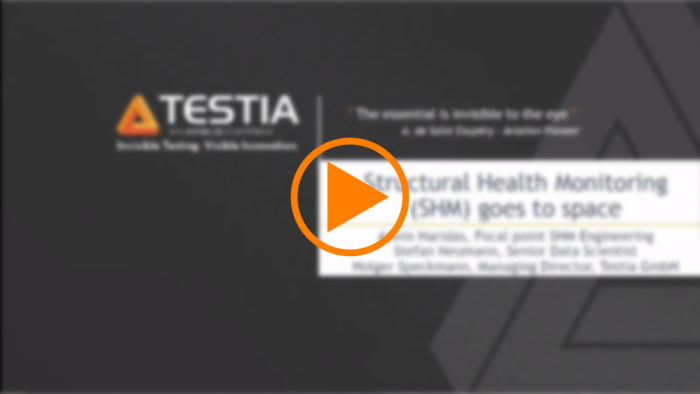How to make space missions safer by gaining continuous data with Structural Health Monitoring for space vehicles? Testia’s SHM expert Aswin Haridas presented some concepts and answers to this question, live via Zoom at the Munich Symposium on Lightweight Design on 3 November 2020.
The use of Structural Health Monitoring for space vehicles is a relatively new innovation, so there are many interesting topics and developments to discuss. For example: Which sensors are most adequate for both the necessary measuring tasks as well as the usage in the vacuum of outer space?
Below you may find both the abstract and the video recording of Aswin Haridas’ presentation, which contains an in-depth comparison of different SHM sensor’s suitability for monitoring space structures.
Presentation abstract:
Over the past few decades, there has been an increased interest in developing innovative solutions for exploring outer space, for space tourism or for unmanned or manned planetary explorations. To ensure improved levels of mission safety, reliability and affordability, several stakeholders including ESA and NASA have employed advanced technologies to monitor the health of mission critical structures. These newly developed asset monitoring systems are aimed to ensure high robustness and mission reliability.
Although the use of conventional Non-Destructive Testing (NDT) methods can provide sufficient information about the state of a given structure at any point in time, they fail to provide continuous streams of information about the structural health. Such a need has asserted the use of Structural Health Monitoring (SHM) sensors and technologies to continuously monitor the health of critical structures throughout the mission to increase their levels of safety and thereby, reducing the overall mission costs. Analogous to a human body, such sensor network would in essence imitate a human nervous system. By analysing the continuous stream of data from such a sensor network an effective prognosis and diagnosis of the state of the critical structure can be made.
Some of the most commonly used SHM techniques include conventional strain gauges, fiber optic sensors and acoustic sensing techniques, among many others [1]. Since the fundamental working principles of each of these technologies are different, their performance is strongly dependent on the use-cases. In the case of Structural Health Monitoring for space vehicles, especially for the measurement of large pressure vessels located at critical section of a space launch vehicle, adequate studies for sensor selection must also include the assessment of the environmental conditions and the measurement range & accuracy of the sensors.
Apart from choosing the sensors that fit the requirements, be it for monitoring operational parameters (e.g. strains and temperatures) or for monitoring the formation and propogation of damages (e.g. delamination), its dependence on the ambient conditions (e.g. ambient temperatures vacuum, cosmic radiation and electromagnetic emissions) must also be evaluated. Even though several studies have investigated the performance of SHM technologies in space environments, most of them do not compare the capabilities of different techniques, especially for monitoring the pressure vessels used in space launch vehicles [2].
Furthermore, since the use of SHM in monitoring space assets is a relatively new innovation, there exists the need for developing standards in order to define the minimum requirements and for validating and certifying the performance of such sensor networks. Such a standard is currently non-existent. In this context, we investigate the most commonly used SHM technologies and compare their performance (for space applications) based on a set of requirements derived from several factors including, environmental conditions, measurement reliability and the technology maturity. In addition, comments on the development of suitable standards and performance evaluation methodologies would be made.
References:
[1] H. Speckmann, R. Henrich, Structural health monitoring (SHM)–overview on technologies under development, In Proc. of the World Conference on NDT, Montreal-Canada, (2004).[2] M. Simone, G. Tumino, P. Gaudenzi. «Structural health monitoring for future space vehicles.» Journal of intelligent material systems and structures 17, no. 7 (2006): 577-585.For more information about Testia’s SHM capabilities and in order to contact us, please click one of the following links:


